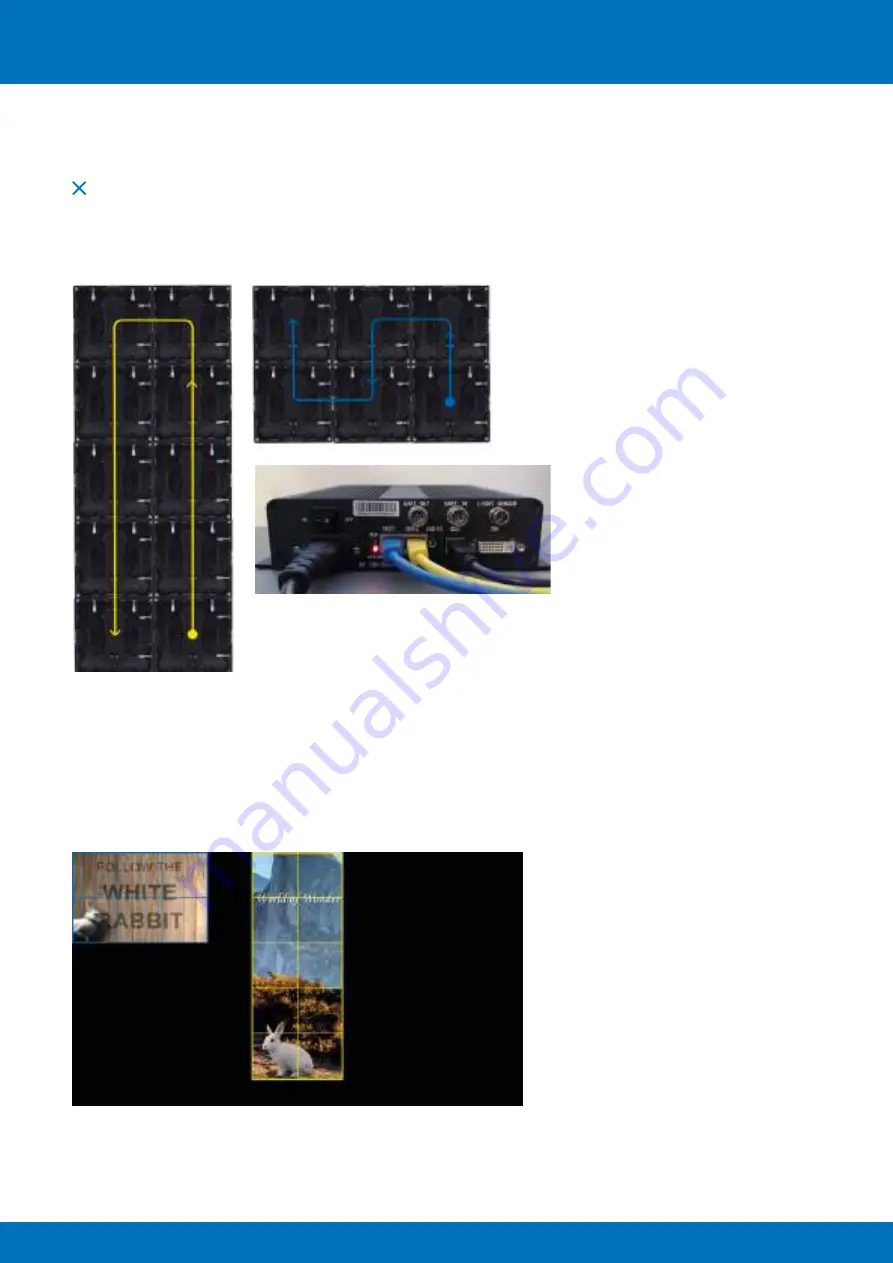
41
ALUVISION > Clemence Dosschestraat 44 > 9800 Deinze, Belgium > T: +32 (0)9 381 54 70 > [email protected] > www.aluvision.com
Multiple screens
Another possibility is having multiple screens in your setup. In this case 2 or more screens are combined
in 1 configuration. Also the video’s that should play back are combined in 1 file. Again multiple data
output ports will be used so the workflow stays more or less the same as for the previous chapter.
Backview multiple screen setup:
Screen 1 = Output 1 = flow 1 (blue)
Screen 2 = output 2 = flow 2 (yellow)
MCTRL300 controller
with 2 screens:
Output 1 = screen 1 (blue),
output 2 = screen 2 (yellow)
In this example a setup with 2 screens is assumed, controlled by a Novastar MCTRL300 controller. The
first screen is 3 cabinets wide and 2 high, the second screen is 2 cabinets wide and 5 high. There are 16
cabinets in total, so 1 signal/data flow would be sufficient. But since there are 2 screens it’s more logical
and more clear to work with 2 data flows. Also 2 data output ports will be used.
Prepare the video content as described in the
‘Video File’
chapter. Important to keep in mind is the amount
of pixels your screens consist of. Combine both screens in 1 video, make use of a gap the size of 1 cabinet
in between the screens. The video should look like this:
Follow next steps to configure the screen: open the NovaLCT software. In the
‘Screen Configuration’
window select the third tab:
‘Screen Connection’
and select the second screen type option:
‘Standard
Screen’
.






























